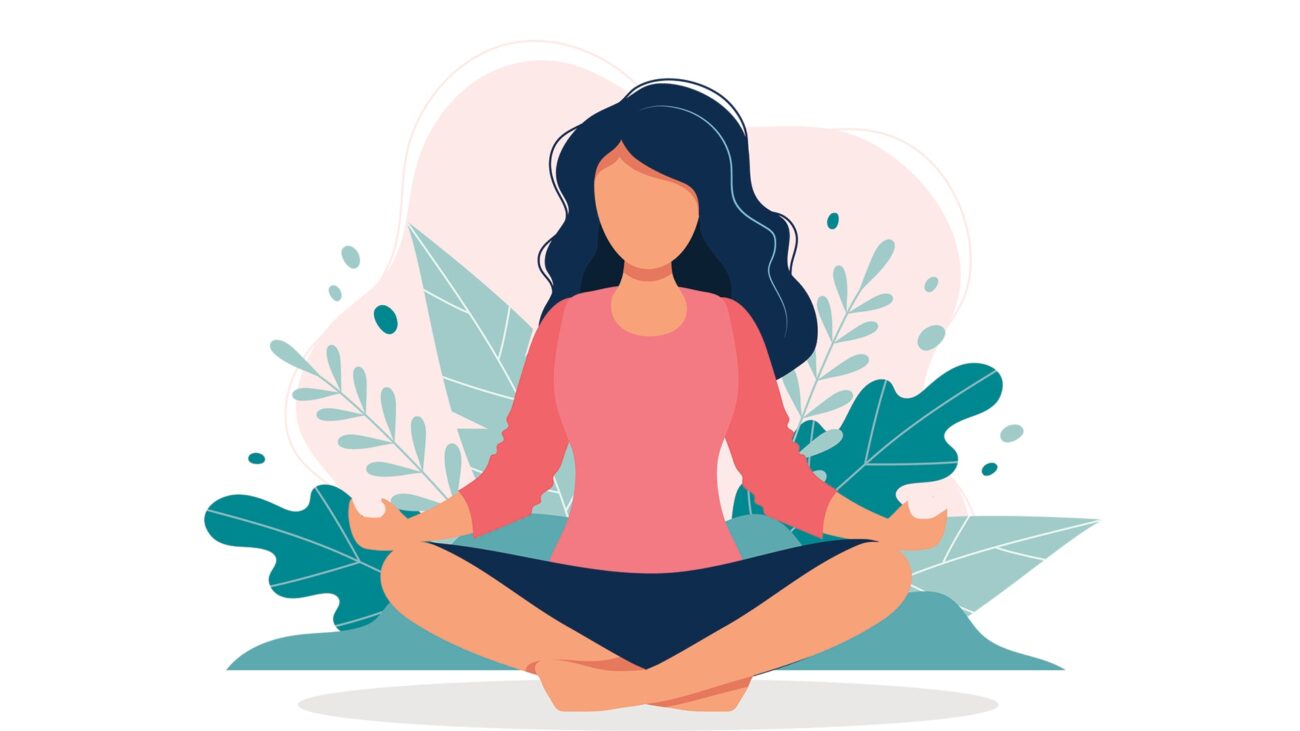How to Do Mindfulness Meditation: A Simple Guide for Teens & Beginners
Ever feel like your mind is trapped in an endless browser with too many tabs open? Homework, texting, games, Instagram—the constant buzz never stops. But did you know that just 5 minutes of mindfulness meditation can dramatically reduce stress and help you feel more grounded?
If You’ve Ever Felt…
…overwhelmed, unable to focus, or like your thoughts just won’t pause—this guide is for you. No rituals, no gurus—just practical tools.
1. What Is Mindfulness Meditation & Why It Works
Mindfulness meditation is simply paying attention to the present moment—like your breathing—without judging it. This powerful habit actually changes your brain’s structure.
- Stress reduction: It cools down your amygdala (“fight-flight” response) and strengthens your prefrontal cortex (focus center)
- Sharper memory & focus: Studies show increased gray matter in memory and attention hubs
- Better moods & health: Regular practice boosts sleep, immunity, and emotional resilience
Health.com – Mindfulness Meditation
Wikipedia – Effects of Meditation
Takeaway: Just a few minutes a day can help your brain learn to chill and stay in the moment.
2. How to Do Mindfulness Meditation: A Step-by-Step Guide
Ready to try it? Follow these steps:
- Find a comfy spot—sit tall in a chair or on a cushion.
- Soft gaze or close your eyes—whatever feels natural. Mindful.org
- Feel your breath—notice cool air coming in, warm air going out. Let it be your anchor.
- Acknowledge distractions—thoughts or sounds will pop up. Just kindly return your focus to breathing. Mindful – How to start your day with Meditation
- Start with just 3 minutes, and add more time as it feels easier.
This is the core of learning how to do mindfulness meditation—small, consistent, and kind.
3. Guided Meditation & Best Meditation Apps
Using guided meditation tools and meditation apps takes the guesswork out of practice:
- UCLA Mindful App and Tara Brach offer trusted free guided sessions
- Smiling Mind includes 700+ youth-friendly meditations—perfect for teens—and it’s free
- Sleep meditation tracks, like bedtime body scans, prepare your mind for restful sleep
- Other popular apps include Insight Timer and Headspace—great for daily use and progress tracking.
Mindful – How to Start Your Day with Meditation
Wikipedia – Mindfulness and Technology
4. Micro‑Mindfulness Exercises for Everyday
Busy day? Try these quick mindfulness exercises to recharge:
- 1‑minute “forest breath”: envision a calm forest while breathing deeply
- 5‑4‑3‑2‑1 grounding exercise: Identify 5 things you see, 4 you hear, 3 you feel, 2 you smell, and 1 you taste
- Mindful walking: notice each step, breeze, and sound during a 5-minute walk
Understanding Everyday Mindfulness Practices
These mini-practices improve focus and calm wherever you are.
5. Morning Meditation & Sleep Meditation Routines
Two great times to practice: morning and night.
- Morning meditation (5–10 minutes) sets a calm tone for the entire day
- Sleep meditation (body scans, gentle breathing) prepares your mind for deep rest
Mindful.org – Training the brain with Mindfulness Meditation
TheGuardian – Can mindfulness really make you happy, lower your blood pressure and improve your sleep?
Routine is key—whether it’s a morning meditation or sleep meditation, consistency matters.
6. Tech Trends: VR Meditation & Wearables
Want to level up your practice using tech?
- VR meditation offers immersive experiences that can calm your mind more effectively than audio alone
- Wearables like smartwatches or breath sensors remind you to pause and breathe when your stress spikes
MingMingFan – Meditation_Social_VR.pdf
Springer – Virtual Reality Mindfulness
Technology makes mindfulness fun and easy to integrate into life.
7. How to Deepen Your Practice
Once daily mindfulness feels good, stretch your skills:
- Move from breath focus → body scan → open awareness for deeper insight
- Advanced practice helps with emotional control and may even reverse brain aging
- Progress is gentle—go at your own pace and enjoy the journey.
Wikipedia – Mindfulness
Conclusion & Call to Action
You’ve discovered:
- The power of mindfulness meditation
- How to do it—step by simple step
- Best guided meditation methods and meditation apps
- Quick mindfulness exercises, morning and sleep meditation routines
- How technology (VR, wearables) enhances calm
- Next-level techniques for deeper practice
As mindfulness expert Jon Kabat-Zinn says, “You can’t stop the waves, but you can learn to surf.” Source: Mindfulness.org
🎯 Your next move: Pick one strategy—like a 3-minute breath session or a quick grounding exercise—and try it right now.
👉 Download a free app like Smiling Mind or Insight Timer.
📅 Set a tiny daily reminder—morning, after school, or before bed.
Harvard Health on meditation benefits
Why it matters today: Life never slows down—but your mind can. Mindfulness meditation is a powerful tool to build focus, calm, and emotional resilience. Start now and watch your inner world grow.
You’ve got this—one breath at a time.
Science based benefits of Meditation
10 Types of Meditation (And How to Choose the Right One for You)
Meditation Poses for Beginners and Beyond


2 thoughts on “How to Do Mindfulness Meditation: Simple Daily Practices to Sleep Better, Stress Less, and Feel Calmer”